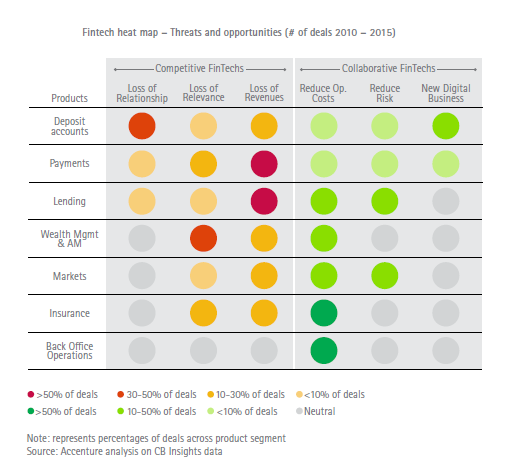What do most businesses do when competitors steal their customers? Copy them.
That’s the natural, logical tendency. If competitors have a new killer feature, we copy it. If they have a new killer marketing message, we copy it. If they have new killer sales system, we copy it.
Sooner or later, we all start looking the same. (And, yes, consumers can hardly be blamed when they think this insurance is a commodity. Looks like one…acts like one…well, quack!)
And that – the copycat strategy – is among the most dangerous, destructive things we can do. In fact, the massive amount of copying witnessed in the retail insurance industry just might be the early ringing of the death knell.
“But if we don’t copy what is successful for others, then what should we do?”
Of course, agents and brokers read the reports on market share erosion. They see the billion-dollar barrage of advertising from alternative distribution systems. They read the forecasts and predictions about innovators, disruptors and new, well-financed outsiders poised for the kill. They know consumer behavior is changing rapidly and question whether they can keep up.
There is -- naturally -- a deep, underlying anxiety about the future of this system. These current and impending attacks on what has so long been our safe harbor frighten agents and brokers. They need a strategy.

And, far, far too many have simply chosen the wrong strategy. They see, hear and read (daily!) GEICO’s message about “price, price, price,” and they see that train only picking up speed.
Naturally, what do they do? Copy it. They advertise on price. They give “quotes” and hope the price is attractive enough to win the business.
If it’s working for the opposition, it should work for us, right?
Wrong.
See also: Integrating Strategy, Risk and Performance
Three reasons never, ever to copy
Business coaches tell us that “success leaves footprints,” so, what’s wrong with following those footprints and copying a successful strategy? At least three things:
1.
We copy what we see. We don’t copy the important behind-the-scenes business processes and systems we don’t see. Staring at “footprints,” we very rarely see the whole story. We see the surface.
Beneath the surface, there is an entire alignment of complex business processes and systems that make that surface shine the way it does.
You think you can see Starbucks' strategy for being the most successful coffee house on the planet, right? It’s right there in the open.
But, behind charging more and delivering a reliable, delightful customer experience are billions of dollars invested in sourcing, roasting, shipping, presenting, training and other systems that we never see.
Following part of a recipe is a sure way to end up with a plateful of garbage.
2.
Generally, following is in itself a bad strategy. The best you’ll do is a weak second place.
Unless your strategy offers something different and something that matters, those you are following have the advantage of leadership. They own that niche in the mind of the customer.
Of course, if you have massive resources, you may be able to leapfrog your leading competitor. With GEICO alone investing a cool billion a year on advertising, that will not and cannot happen.
Those resources simply do not exist in the agent-broker channel.
3.
Copying strategy means that you’re skipping the hard work of strategy: clear-eyed analysis of what’s happening in the real world and how you can unleash your best assets to win there.
As every serious student of strategy knows, good strategy is based on an unflinching analysis of internal and external forces, and disciplined choices about where to play and where not to play.
And here, we get to the serious flaw in the most common copycat strategy performed by agencies and brokerages. We see the consumer being “brainwashed” with the incessant pounding of “price, price, price,” and we witness the loss of market share in our channel, and what do we do?
Copy that strategy...and try to sell on price. And, herein, lies the most dangerous part of trying to copy your way to success. A good strategy for one company or one distribution system is almost always a bad strategy for everyone else.
How can we win against our well funded competitors?
Small armies beat big armies. In fact, very, very small armies beat very, very big armies.
You would expect a military that is 10 times the size of its adversary to demolish a small opponent. But no, military historian Ivan Arreguin-Toft has shown us that the 10X behemoth loses 30% of the time.
That’s right. 30% of the time, an army that is 10% the size of the opponent wins.
How does the smaller army win? By fighting a “different war.” (In fact, since 1950, smaller armies have won 55% of the time.)
The same is true in business. We can only win by fighting a different war.
We cannot copy strategy.
What's wrong with selling on price? Isn't that what the consumer wants?
Here are four reasons why independent agents and brokers should never sell insurance on price.
1.
Our channel is more expensive. So selling on price is just plain dumb. Sure, you'll find exceptions. Even the slowest lion picks off the slowest gazelle.
But in the long run, put your resources where they have the best chance of winning. The price-shopping insurance customer -- and, yes, there are millions of them out there -- will seek and find a home. And billions in advertising dollars are helping them navigate their way.
I recently analyzed four years of AM Best industry data and, not to my surprise, discovered that the independent channel was an average 2.3% more expensive to operate. And, with the direct channel's massive commitment to advertising, a lot of the expense gets consumed there, and proportionately less in other expenses.
Moral of the story: when you're more expensive, don't compete on price.
2.
Selling on value wins more than selling on price. Researchers from Deloitte, led by Michael E. Raynor and Mumtaz Ahmed, analyzed data on more than 25,000 companies covering 45 years of activity.
Their five-year study began with a statistical analysis to identify which companies have truly exceptional performance, 344 in all.
They discovered that the most successful companies -- based on a thorough examination of return-on-asset performance -- followed three strategic rules:
- Better before cheaper. They rarely compete on price.
- Revenue before cost. They drive profits through price and volume, not thrift.
- There are no other rules. Everything else is up for grabs, and they are willing to change anything to remain true to the first two rules.
Of course, selling on value can't just be another empty advertising jingle. Agents and brokers have to deliver value. They have to add value as the product passes through their hands to the consumer.
That may be a new demand for many agents and brokers today. Perhaps in generations past, selling the product was sufficient. But, as today's consumer is offered a growing array of choices, this is no longer an option.
Especially as the consumer progressively sees more and more of insurance products as a replaceable commodity,
value must be added at the retail level.
The inherent and unique strengths of the independent channel -- the benefits of relationship -- must be leveraged to the consumer's advantage. Modern communication technology makes this much, much easier. And i's costs are fractional compared with additional payroll.
3.
Selling on price is the ultimate race to the bottom. First of all, selling value costs more. You must do something extra, something more. And that usually costs money. When you're selling on price, you're killing your profits. From what bucket do you draw to create that extra value?
If, let's say, you have a 20% profit margin, and you backed everyone's premium down by a mere 10 points, that's half your profit.
Price selling results in a self-inflicted spiral down the drain. First, you sell for less. In response, you invest less in your support staff and systems. Then, your customers feel less satisfied… on and on it goes.
Price selling may result in short-term wins. You'll sell a few policies that you wouldn't have otherwise. It’s much, much easier than investing in the blood, sweat and tears work of creating new value. Training staff. Monitoring behavior. Managing new systems. And so forth.
Moral of this story: The industry has matured far beyond the "lifestyle" stage where the retail sector merely acted as "sales reps" for manufacturers. They absolutely must add value. That is what grown-up businesses do.
4.
Surprise…consumers don't care about price nearly as much as you think they do. Price never completely goes away as part of the overall value proposition. But according to
astute research by Bain & Company, consumers are largely compelled to make their insurance buying because of one of these two values: price or peace of mind.

- The price-driven customer is perfectly suited to the direct channel. The peace-of-mind-driven customer is perfectly suited to the agency/broker channel. As industry-wide analysis will show you, the price-driven customer is expensive to get and easy to lose.
- The efficiencies of the direct channel are well suited and well designed to generate value from that demographic. The opportunities for depth of relationship and value-added communications make the peace-of-mind customer perfectly suited for the agency broker channel.
See also: Capturing Hearts and Minds
But doesn't price still matter? Yes, of course, but perhaps not nearly as much as you may think it does.
My friend Brady Polansky from EzyLinx, shared what many may consider to be shocking statistics based on a massive study of consumer behavior.
57% of consumers who call independent agencies do not take the lowest quote provided.

Rather, they choose insurance that costs between 19% and 53% more than the lowest quote provided. (Imagine what that could do to your top-line revenue!)
Moral of this story: It's a naive assumption to think that all consumers are the same. They're not. Pursue the ones who best fit this channel: the people who actually care what insurance does.

Remember when we took pride in saying that "insurance is a relationship business?"
The top 5% or 10% of your customers probably feel that relationship. But recent
research from Deloitte makes one thing very clear: The majority of an agent's customers don't feel that relationship.
Agencies have simply outgrown the old-school methodologies of getting and keeping relationships. It's too expensive. Besides, that's not how customers relate to business anymore.
Consumers expect a well-crafted digital communication strategy with their vendors. And agents and brokers can use today's digital channels to deliver value.
Using modern technology, they can nurture their customers. They can help protect them. They can make them smarter insurance consumers. They can help prepare them for disasters. They can help prevent accidents, injuries and casualties. They can offer useful products. And they can follow each customer, one-at-a-time, and guide their customer journey, from the "I want a quote" to "I love my broker."
Price marketing is fine…for the direct channel. Don't copy them. A winning strategy for their channel is a losing strategy for ours.
But, if relationship and value are the pillars of our promise, deliver on it. Today's tools let you deliver on that old school promise…with new school technology.
The Ultimate Solution for Maximum Growth
Is this an impossible situation for the leader of a modern insurance agency or brokerage?
If we don’t have "price" in our quiver, just how do we make a difference in the lives of our customers?
See also: Checklist for Improving Consumer Experience
If, in fact, they value relationship – that sense that they have an advisor and advocate in their corner – how do we deliver that? The days of glad-handing our clients around town are over.
- The old methods – one-on-one marketing and nurturing – are over. Those methods are dreadfully expensive.
- Most agents and brokers of today have a book of business that’s much larger than the average firm of a generation ago. It’s folly to think we have a traditional relationship with them. (How many times have you passed a customer in the vegetable aisle and they didn’t know you…and you didn’t know them.)
- Besides, the last thing today’s consumer wants is a random telephone interruption from their insurance agent. (They want you there…when they want you there. Not when they’re at work. Not when they’re having dinner.)
- The answer is simple. Our competing channels – the direct channel and the emerging digital channel – uses technology against us. But, today, agents and brokers can fight back. Using their own technology. Technology that delivers meaningful communications. Technology that treats everyone like an individual. Technology that strengthens your brand. Technology that deepens relationships. Technology that connects the data in your agency management system to a marketing system that fulfills the inherent promise in the agent-broker channel: that we’ll be there…that we’ll protect…that we care.
 To learn about how marketing automation can transform the way you communicate to your clients – and make your clients love your agency – download a copy of Buyer’s Guide: Marketing Automation For Independent Agents & Brokers. Readers may get a free copy here.
To learn about how marketing automation can transform the way you communicate to your clients – and make your clients love your agency – download a copy of Buyer’s Guide: Marketing Automation For Independent Agents & Brokers. Readers may get a free copy here.


















 Reinvention and Transformation: The New Normal
The wave of change to a digitally and data-empowered world driven by ever-increasing customer demands is inevitable. And it is a given that there will be constant pressure from both start-ups and established companies to outdo each other in the race to better meet those needs and capture more share of the enormous value presented by the insurance market.
For insurance companies, the need to reinvent and transform the business is no longer a matter of if, but when. Together, the Three-Box framework and three-step approach provide a formula to use to develop your reinvention and transformation strategy. But the bigger challenge insurance leaders face is the pace of transformation — because the pace of change is not slowing down.
Insurance leaders should ask themselves: Do we have a strategy that considers both transforming the legacy business and creating a new business for the future? Who are our future customers and what will they demand? Who are our emerging new competitors? Where are we focusing our resources… on the business or on the infrastructure? What can we do to demonstrate to all employees that we must be — and that we are — committed to working in balance across all three boxes?
Reinvention and Transformation: The New Normal
The wave of change to a digitally and data-empowered world driven by ever-increasing customer demands is inevitable. And it is a given that there will be constant pressure from both start-ups and established companies to outdo each other in the race to better meet those needs and capture more share of the enormous value presented by the insurance market.
For insurance companies, the need to reinvent and transform the business is no longer a matter of if, but when. Together, the Three-Box framework and three-step approach provide a formula to use to develop your reinvention and transformation strategy. But the bigger challenge insurance leaders face is the pace of transformation — because the pace of change is not slowing down.
Insurance leaders should ask themselves: Do we have a strategy that considers both transforming the legacy business and creating a new business for the future? Who are our future customers and what will they demand? Who are our emerging new competitors? Where are we focusing our resources… on the business or on the infrastructure? What can we do to demonstrate to all employees that we must be — and that we are — committed to working in balance across all three boxes?







